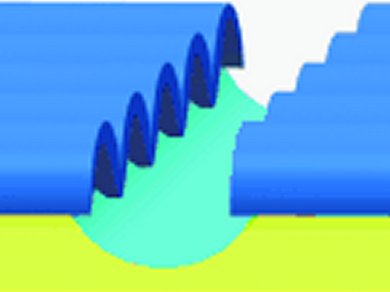The need to improve the design of chemical sensors is driven by the requirements for high sensitivity as well as accessible and low-cost manufacture. Professor Wooyoung Lee and his team, Yonsei University, Korea, have come up with a novel, low-cost, scalable, and lithography-free but nanogap-based chemical sensing method for hydrogen gas.
Lee’s method is called highly mobile thin film on an elastomer (MOTIFE). It involves buckled and cracked Pd and PdNi thin film generated by stretching the film on a poly(dimethylsiloxane) (PDMS) elastomeric substrate to reliably and reproducibly provide highly sensitive H2 sensors (see the figure for the step-by-step outline).
A movie of the MOTIFE approach shows how straining of the thin film causes well defined cracks that relax back upon release of this strain. Subsequent volumetric changes associated with uptake of H2 cause these cracks to open again, thereby providing a reversible on–off sensing mechanism.

- Highly Mobile Palladium Thin Films on an Elastomeric Substrate: Nanogap-Based Hydrogen Gas Sensors
J. Lee, W. Shim, E. Lee, J.-S. Noh, W. Lee,
Angew. Chem. Int. Ed. 2011.
DOI: 10.1002/anie.201100054 - J. Lee, W. Shim, E. Lee, J.-S. Noh, W. Lee,
Angew. Chem. 2011.
DOI: 10.1002/ange.201100054 - Movie of the MOTIFE approach



